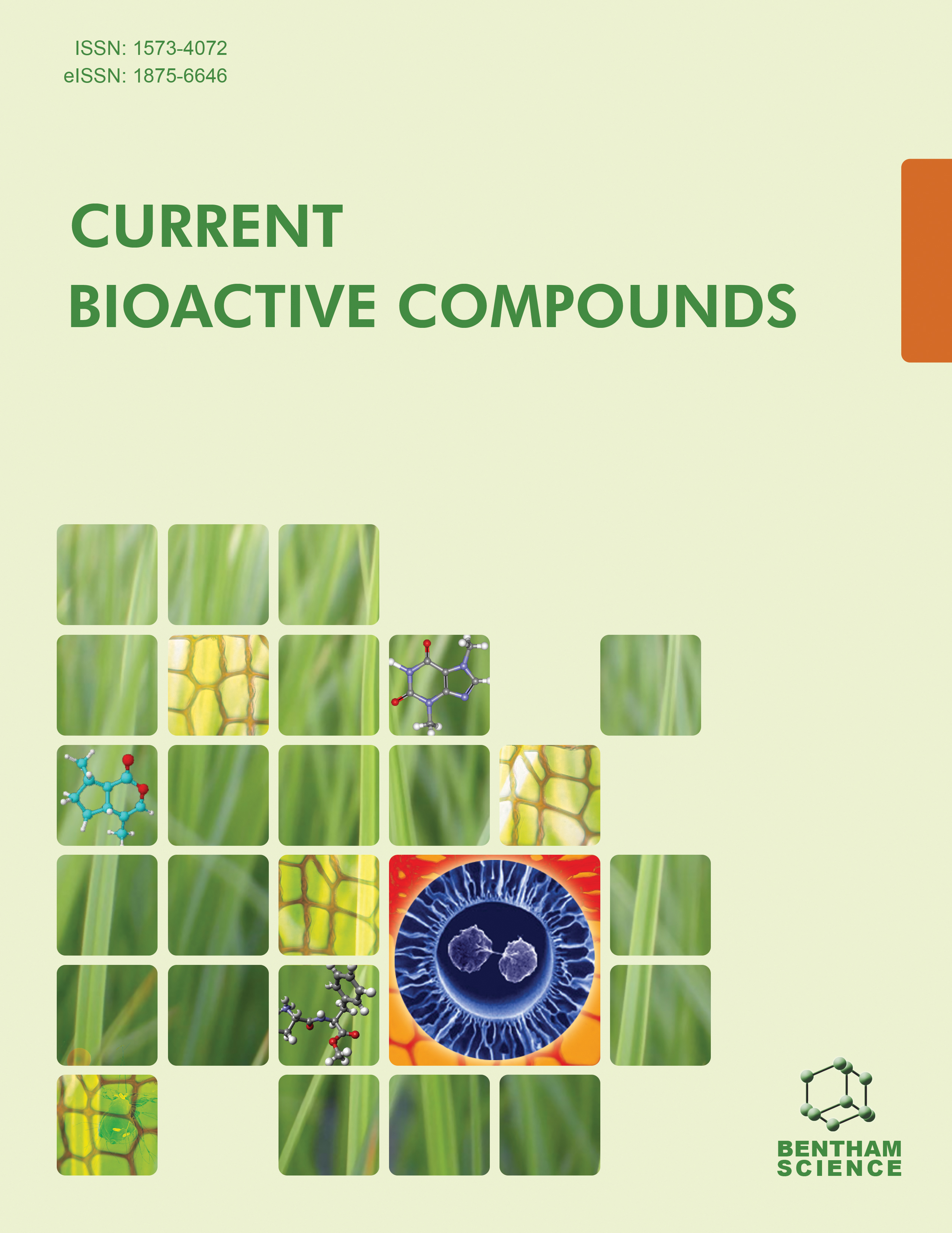- Home
- A-Z Publications
- Current Bioactive Compounds
- Previous Issues
- Volume 8, Issue 3, 2012
Current Bioactive Compounds - Volume 8, Issue 3, 2012
Volume 8, Issue 3, 2012
-
-
A GC-MS Based Analytical Method for Detection of Smoke Taint Associated Phenols in Smoke Affected Wines
More LessGuaiacol and 4-methylguaiacol are routinely used as markers to determine extent of smoke impact on winegrapes and wines. However, smoke contains a complex group of compounds that may contribute to smoke taint in winegrapes and wine. In this study, a gas chromatography-mass spectrometry (GC-MS) based analytical method was developed and validated for the profiling of various smoke taint compounds in wine Read More
-
-
-
Variation in Condensed Tannin Content, Composition and Polymer Length Distribution in the Skin of 36 Grape Cultivars
More LessAuthors: Mark O. Downey, Marica Mazza, Tara J. Seddon, Simone Rochfort and Mary MillikanGrape tannin content and composition studies have been limited to a few varieties. To determine whether grape tannin composition was generic or variety specific, we examined skin tannins in 36 cultivars. Tannins were analyzed by phloroglucinolysis and gel permeation chromatography (GPC). Concentration ranged from 1.3 (Malbec) to 15.6 mg/g fresh weight of skin (Red Emperor). Catechin terminal subunits ranged from 45.6 Read More
-
-
-
Agave (Agave spp.) and its Traditional Products as a Source of Bioactive Compounds
More LessAgave has been used as a raw material for food and folklore medicinal purposes. Traditional processing involves the use of agave as a source of carbohydrate-rich syrups for direct use or as substrate to yield hydrolyzed fermented products and spirits. Agave plants can accumulate significant amounts of inulin, important molecule with prebiotic activity. The agave plant has been used to feed ruminants in arid areas where drou Read More
-
-
-
Classification, Biotransformation and Antioxidant Activity of Olive Fruit Biophenols: A Review
More LessOlive biophenols affect the organoleptic and nutraceutical properties of fruits; therefore, it is an emerging research field. In addition, a plethora of health-promoting properties have been attributed to the phenolic content of olive fruits. The main biophenols can be divided into different sub-groups such as phenolic acids and alcohols, flavonoids, lignans and secoiridoids. The latter sub-group of biophenols is typical in olive fruit Read More
-
-
-
Mass Spectroscopic Methods for the Characterization of Flavonoid Compounds
More LessFlavonoids are a broad class of polyphenolic secondary metabolites widely dispersed throughout the plant kingdom and found in substantial levels in commonly consumed fruits, vegetables and beverages. These compounds have aroused considerable interest because of their potential beneficial biochemical and antioxidant effects on human health. The structures of flavonoids are characterized by a fifteen-carbon back Read More
-
-
-
Susceptibility of Helicobacter pylori to Natural Products: Can Past Research Direct Future Drug Development?
More LessAuthors: Temitope O. Lawal, Kapil K. Soni, Brian J. Doyle, Bolanle A. Adeniyi and Gail B. MahadyThe discovery of Helicobacter pylori (H. pylori), the curved or spiral shaped bacteria, as the main etiologic organism of chronic gastritis, peptic ulcer disease, and gastric cancer was one the most significant discoveries in gastroenterology of the twentieth century. Helicobacter infections promote infiltration of the gastric mucosa by neutrophils, macrophages, and T and B lymphocytes, and leaves the host prone to complications re Read More
-
-
-
Annona sp: Plants with Multiple Applications as Alternative Medicine - A Review
More LessAnnona species have been used as a natural remedy for a variety of illnesses with antiparasitic, antispasmodic, antidiarrheal, antiulcer, sedative, analgesic, hypotensive, and vermifugal effects. These properties are due to the presence of a number of bioactive compounds on the leaves, fruit, seeds, and stem. The aim of this review is to show the main species of Annona, their medicinal properties and the chemical constituents Read More
-
-
-
Bioactivity of Exogenous Cytoskeleton Proteins: Regulation of Development of Plant Microspores as Biosensors
More LessAuthors: Victoria V. Roshchina and Ivan M. VikhlyantsevBioactivity of the cytoskeleton proteins such as actin, myosin and titin that have been extracted from the rabbit muscle was analyzed on plant misrospores as unicellular biosensors. The fibrillar forms of the proteins stimulated the germination of vegetative microspores from horsetail Equisetum arvense and generative (pollen) microspores from knight’s star Hippeastrum hybridum. In special experiments the proteins t Read More
-
-
-
Antifeedant Activity of Camptothecin and its Semisynthetic Derivatives Against Spodoptera litura (Fabricius) (Lepidoptera: Noctuidae) Larvae
More LessAuthors: Wen-Qun Li, Ying-Qian Liu, Yong-Long Zhao, Xing-Wen Zhou, Liu Yang, Gang Feng and Liang KouThe antifeedant activities of camptothecin 1 and its semisynthetic derivatives 2-12 were evaluated against an economically important pest, Spodoptera litura (Fabricius) (Lepidoptera: Noctuidae). Simple chemical conversions were carried out on the natural camptothecin obtained from a Chinese medicinal plant Camptotheca acuminate. These conversions focused on different functional modified sites in the camptothecin Read More
-
Volumes & issues
-
Volume 21 (2025)
-
Volume 20 (2024)
-
Volume 19 (2023)
-
Volume 18 (2022)
-
Volume 17 (2021)
-
Volume 16 (2020)
-
Volume 15 (2019)
-
Volume 14 (2018)
-
Volume 13 (2017)
-
Volume 12 (2016)
-
Volume 11 (2015)
-
Volume 10 (2014)
-
Volume 9 (2013)
-
Volume 8 (2012)
-
Volume 7 (2011)
-
Volume 6 (2010)
-
Volume 5 (2009)
-
Volume 4 (2008)
-
Volume 3 (2007)
-
Volume 2 (2006)
-
Volume 1 (2005)
Most Read This Month
Article
content/journals/cbc
Journal
10
5
false
en

Most Cited Most Cited RSS feed
-
-
Podophyllotoxin: Current Perspectives
Authors: Ying Qian Liu, Liu Yang and Xuan Tian
-
- More Less

